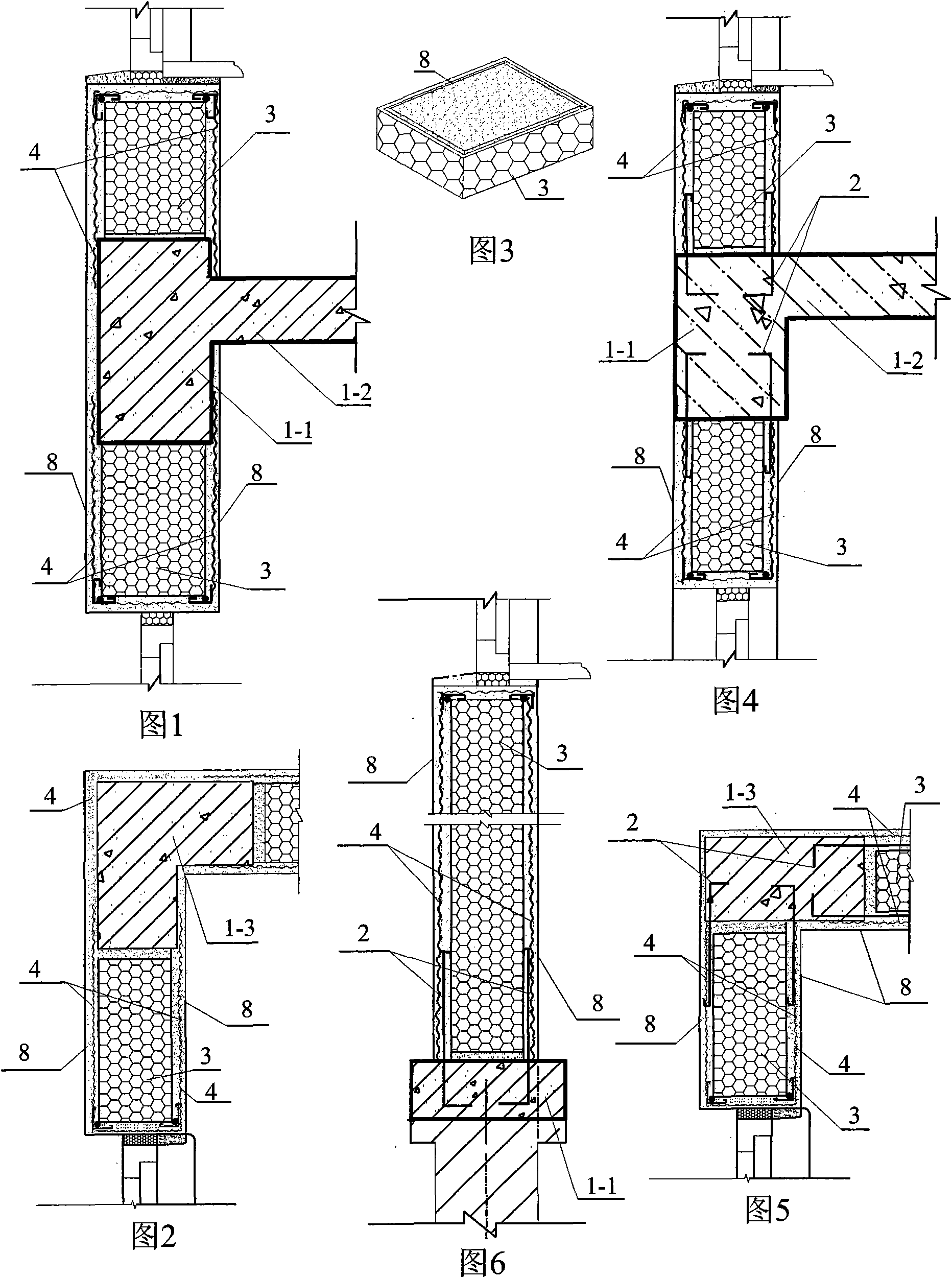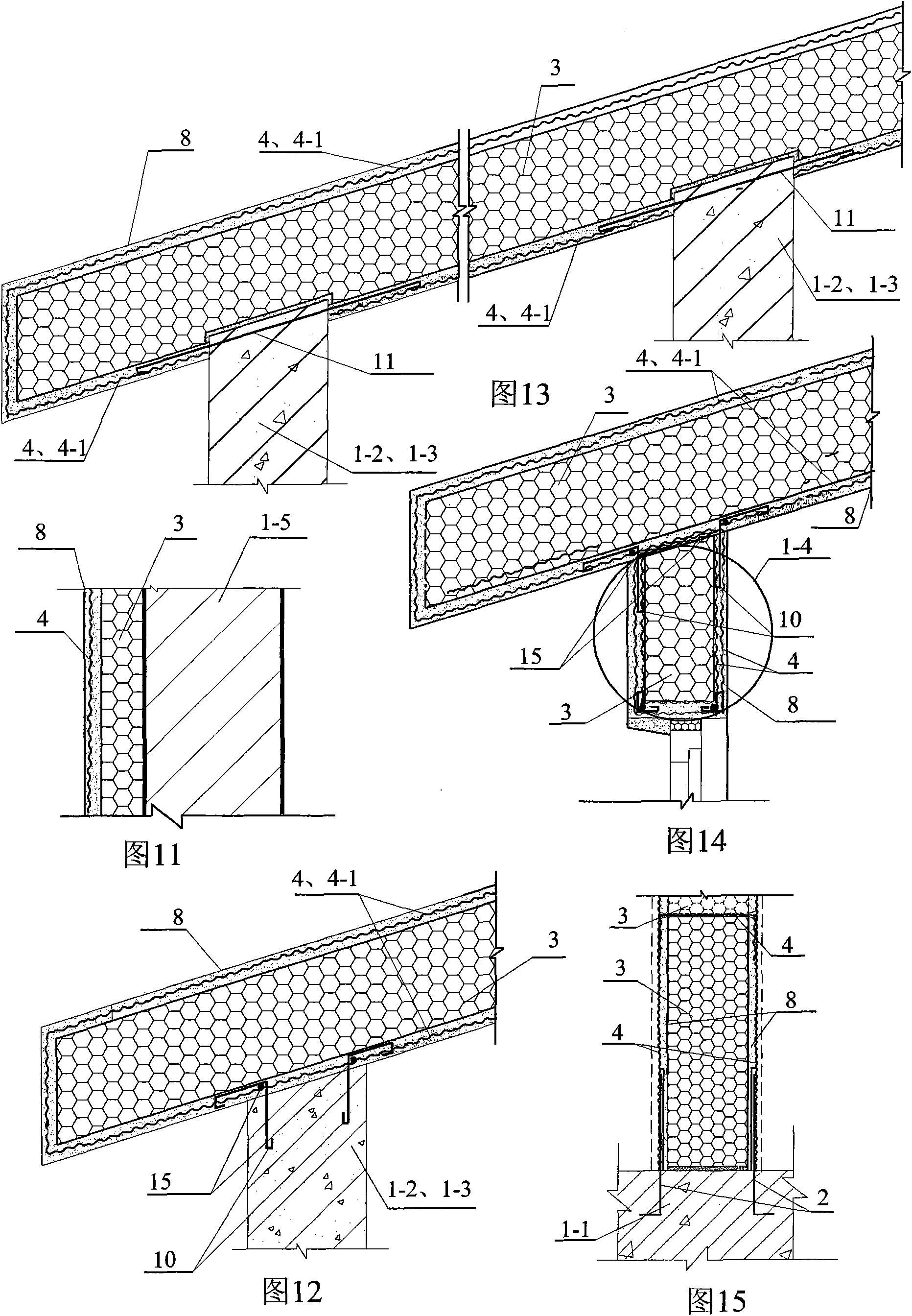Composite component of alkaline-resisting mesh cloth plastering
A composite component and alkali-resistant technology, which is applied to building components, building structures, truss structures, etc., can solve the problems of not effectively solving safety and heat preservation, not being able to achieve low heat transfer coefficient, and having many thermal bridges in insulation blocks , to achieve the effect of light weight, good thermal insulation, good shock resistance and wind resistance
- Summary
- Abstract
- Description
- Claims
- Application Information
AI Technical Summary
Problems solved by technology
Method used
Image
Examples
specific Embodiment approach 1
[0036] Specific implementation mode one: see figure 1 , figure 2 , a structure of the composite member of the present embodiment is composed of a load-bearing member 1, a core layer 3, an alkali-resistant mesh cloth 4, and a protective layer 8 of the main structure of the building; the load-bearing member 1 of the main structure of the building is a concrete beam or a steel beam Or steel-concrete composite beam 1-1, concrete slab 1-2, concrete column or steel column or steel-concrete composite column 1-3, concrete wall or load-bearing masonry wall 1-3-1, the core layer 3 is polymer Insulation material, or the core layer 3 is mineral wool or plant straw, and the protective layer 8 is cement mortar or fine stone concrete plastering layer, or the protective layer 8 is modified cement mortar or fine stone concrete plastering layer; the core layer 3 is fixed on the concrete beam or steel beam or steel-concrete composite beam 1-1, concrete slab 1-2, concrete column or steel column...
specific Embodiment approach 2
[0042] Specific implementation mode two: see Figure 4 ~ Figure 6 The difference between this embodiment and the first embodiment is that this embodiment also adds an anchoring steel bar 2, and the anchoring steel bar 2 is connected with the concrete beam or steel beam or steel-concrete composite beam 1-1 of the load-bearing member 1 of the main building structure. , concrete slab 1-2 anchoring, or / and anchoring steel bar 2 and concrete column or steel column or steel-concrete composite column 1-3 of the load-bearing member 1 of the main building structure, concrete wall or load-bearing masonry wall 1-3-1 anchoring , the anchoring steel bar 2 is located in the protective layer 8, and the alkali-resistant mesh cloth 4 is pasted and connected to the protective layer 8 at the position of the anchoring steel bar 2.
specific Embodiment approach 3
[0043] Specific implementation mode three: see Figure 7 ~ Figure 10 The difference between this embodiment and specific embodiments one and two is: the core layer 3 of this embodiment is also fixed on the concrete beam or steel beam or steel-concrete composite beam 1-1, concrete slab 1-2, The outer side of the concrete column or steel column or steel-concrete composite column 1-3, and the concrete wall or load-bearing masonry wall 1-3-1 constitute a composite wall body plastered with an alkali-resistant mesh cloth for external heat preservation.
PUM
 Login to View More
Login to View More Abstract
Description
Claims
Application Information
 Login to View More
Login to View More - R&D
- Intellectual Property
- Life Sciences
- Materials
- Tech Scout
- Unparalleled Data Quality
- Higher Quality Content
- 60% Fewer Hallucinations
Browse by: Latest US Patents, China's latest patents, Technical Efficacy Thesaurus, Application Domain, Technology Topic, Popular Technical Reports.
© 2025 PatSnap. All rights reserved.Legal|Privacy policy|Modern Slavery Act Transparency Statement|Sitemap|About US| Contact US: help@patsnap.com



